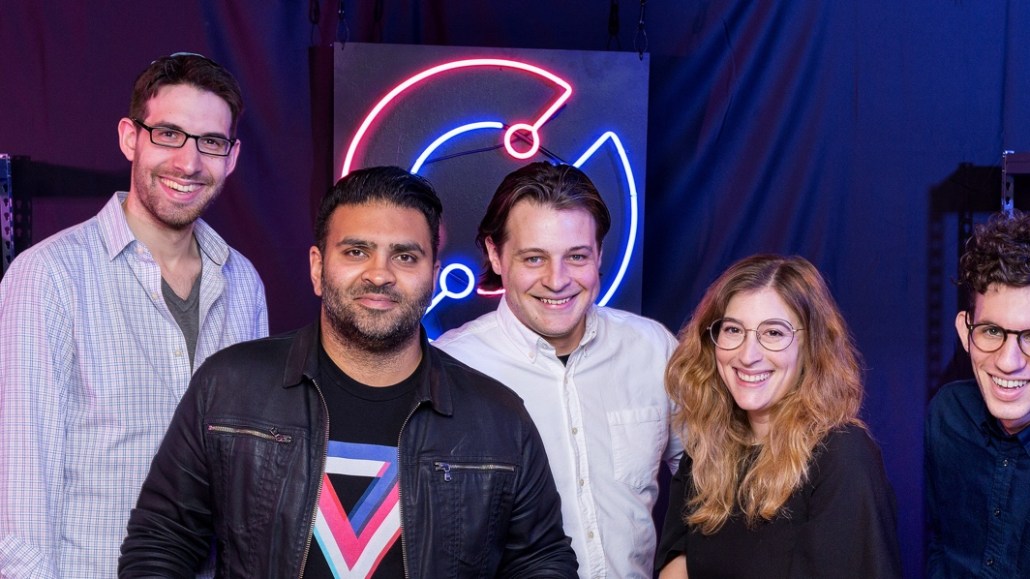‘We’ve learned a playbook’: How The Verge used Facebook video to grow Circuit Breaker

As The Verge looks to get more vertical, it will use a playbook developed with its gadget blog Circuit Breaker. The vertical, which the tech publisher launched in the spring of 2016, rode a video strategy to nearly 1 million Facebook fans, a live show that debuted on Twitter this week and a growing pipeline of video projects it’s able to sell separately to advertisers through sponsorships.
Circuit Breaker remains a small operation — it has a full-time staff of five, though it regularly draws contributions from other Verge staffers — but the vertical now accounts for over 12 percent of the Verge’s monthly pageviews and 30 percent of its monthly video views; Circuit Breaker videos amass over 465,000 views on average, according to Tubular Labs data.
“We’ve learned a playbook,” said Nilay Patel, The Verge’s editor-in-chief.
Before The Verge was The Verge, it was known as This is My Next, and it mainly covered gadgets. But as its editorial purview expanded, not just into adjacent areas like apps and games, but into broader topics like copyright and the future of privacy, its gadget coverage started to feel separate.
Patel wanted to give that coverage a separate place to live and thought Facebook would be the easiest place to develop a distinct audience for it. When The Verge first split out Circuit Breaker, the focus was on a combination of written and visual content.
But Helen Havlak, the site’s director of editorial strategy, noticed within weeks that video views were driving much of the audience growth. “The only way to grow a Facebook page right now is through video,” Havlak said.
That meant figuring out how to ramp up video output quickly and affordably. For most of Circuit Breaker’s first year, it focused on what it called slideshow videos, quick clips that highlighted a product’s features. Within a matter of months, it was posting at least one of those videos per day.
The strategy was soon copied widely by everybody from Insider to the Daily Dot, so Circuit Breaker had to figure out how to keep its video output growing. This past summer, it began leaning into what it’s calling “personality-driven” video series that Verge staffers power.
One example is “DIY Gadgets,” a hands-in-a-pan-esque video series hosted by Circuit Breaker staffer Chaim Gartenberg that shows viewers how to do things like build their own Amazon Alexa. Sponsorship of that series has already been sold to chipmaker Qualcomm.
In another context, it would be possible to imagine “DIY Gadgets” or Walt Mossberg’s “Gadget Museum” as a half-hour show on a cable channel somewhere. But because it’s still Facebook video, the series’ episodes are short and can be watched without sound. “We’re really trying to pilot shows that are Facebook-first,” said Jake Kastrenakes, Circuit Breaker’s editor-in-chief.
That Facebook-first strategy has already been ported over to other Verge verticals, such as Verge Science, which has nearly doubled the size of its Facebook audience in the past two months, according to Tubular data. Its signature video series is personality-driven, hosted by Verge staffer Loren Grush.
“The goal was not, ‘How do we use Facebook to drive traffic to our site?'” Patel said. “We’re not trying to build websites. We’re trying to build brands.”
More in Future of TV

Future of TV Briefing: A preview of Digiday’s CTV Advertising Strategies event
This week’s Future of TV Briefing previews next week’s CTV Advertising Strategies event that I’ll be hosting with top brand and agency executives in New York City.

Future of TV Briefing: TV is YouTube’s top screen — except when counting views and among Gen Z viewers
This week’s Future of TV Briefing looks at how mobile still accounts for an overwhelming majority of YouTube video views and why some Gen Z viewers aren’t tuning into YouTube on TV screens.

YouTube vs. TikTok vs. Instagram: What Gen Z really watches in 2025
At VidCon 2025, more than a dozen Gen Z attendees weighed in on the video apps they are most and least likely to watch.





